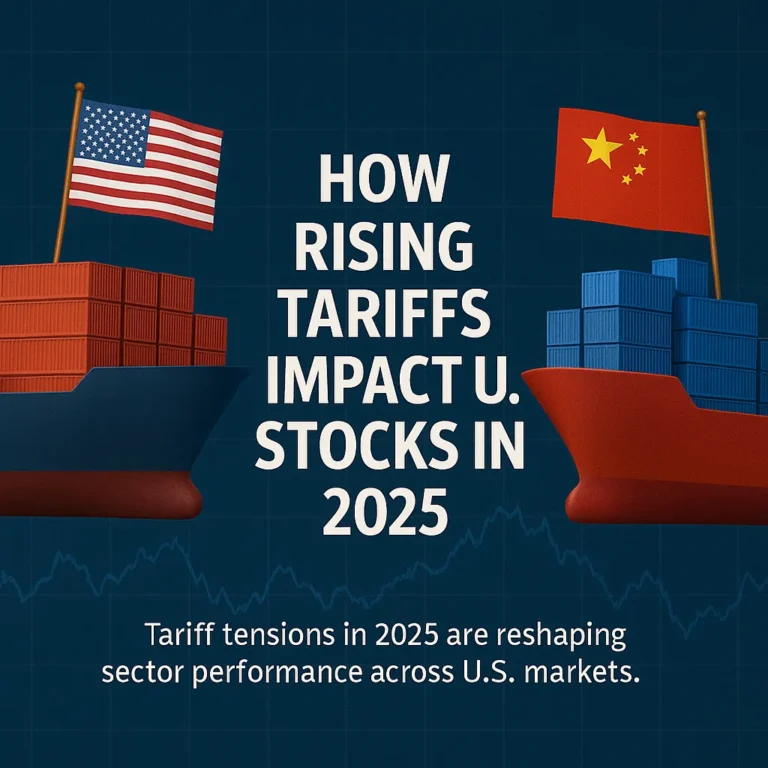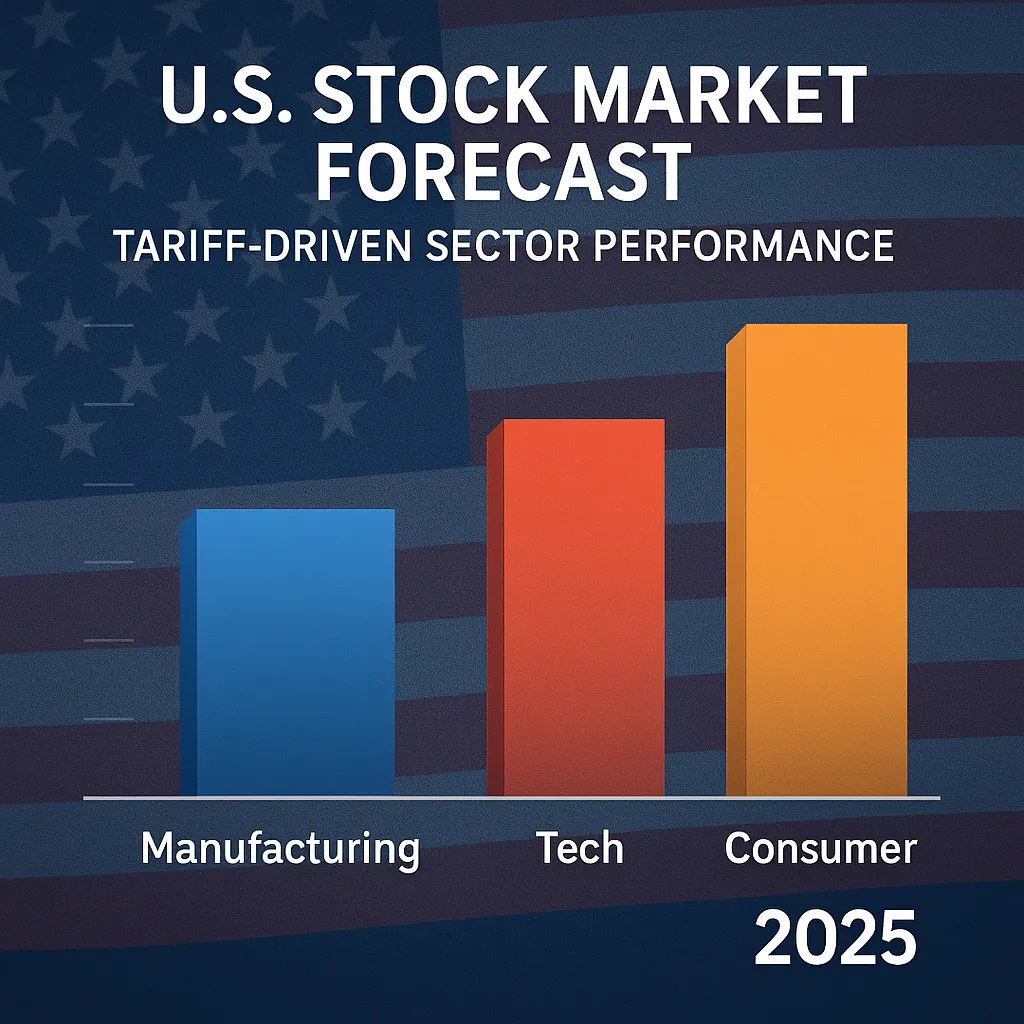
How Rising Tariffs Could Impact U.S. Stocks in 2025 — and Which Sectors Might Win
Investors want a clear, practical lens on how rising tariffs impact U.S. stocks in 2025—which costs will matter most, how quickly pricing power can offset them, and where sector rotation may surface. Rather than reacting to headlines about trade tensions, this outlook dissects the mechanics: input costs filtering into margins, supply-chain rerouting, and sector-specific sensitivity across semiconductors, apparel, machinery, and consumer names. By comparing prior tariff cycles with the current backdrop, we’ll highlight what’s changed: freight dynamics, import prices, and management tone. You’ll also see how relative strength versus major indexes can flag early winners and laggards before estimates fully adjust. For traders and investors building a 2025 watchlist, this guide blends macro signals with actionable takeaways so you can stay ahead of sector-level rotation while tracking the broader U.S. stock market forecast.
📊 Key Points
- 💸 Margins hinge on cost pass-through — monitor import prices, freight, and wage trends closely.
- 🏭 Tariff-exposed groups (apparel, machinery, semis supply chain) often diverge early from the S&P 500.
- 📈 Relative strength signals can pre-empt earnings revisions—compare RS vs SPX and QQQ weekly.
- 🛡️ Have dual playbooks: escalation favors defensives; easing favors cyclicals and small/mid-caps.
Market Overview: Tariffs, Pricing Power, and 2025 Sector Setup
A practical way to assess how rising tariffs impact U.S. stocks in 2025 is to separate margin mechanics (input costs, freight, FX) from demand resilience (brand strength and pricing power). Historically, headline trade tension spikes raise volatility, but leadership often hinges on cost pass-through and supply-chain agility. For context, watch tariff-sensitive groups in industrials and select consumer names while cross-checking breadth versus the majors. This helps frame a balanced U.S. stock market forecast without overreacting to every headline about the trade war impact on stocks. If policy rhetoric escalates, higher-beta areas may chop; easing tones could favor cyclicals. We’ll track relative strength, import price data, and commentary on the import/export policy outlook through earnings season to spot early rotations among likely tariff sectors 2025.
Internal read: Day Trading vs Swing Trading | External source: Reuters – Markets
What to watch next: (1) import price indexes relative to PPI; (2) management language on “cost pass-through” and “surcharge” timing; (3) relative performance of multi-national heavyweights vs. domestically focused peers. These help validate (or challenge) the baseline thesis before earnings revisions fully flow through.
Deep Dive: Relative Strength, Semis Supply Chains, and Signal Tracking
A second lens on how rising tariffs impact U.S. stocks in 2025 is relative strength across tariff-sensitive groups. Semiconductors can act as an early read on global manufacturing and capex appetite: when foundry commentary leans conservative and unit growth slows, hardware with concentrated input exposure typically lags software/AI services. If policy risk eases, the group often rebounds quickly on improved visibility. Cross-reference price action with fresh macro signals—import price indexes, PMIs, and management remarks on “cost pass-through” and “surcharges”—to validate rotation before estimates move. For day-to-day timing nuance, review setups alongside broad indices to avoid chasing noise.
Context: Reuters – Markets · Bloomberg – Markets · MarketWatch (news flow) · Monetary policy backdrop: Federal Reserve
Signals to Track This Month
- Import Prices vs. PPI: Rising spreads can pressure margins where pass-through lags.
- Earnings Call Language: “Surcharge,” “re-routing,” “lead times,” and “inventory normalization.”
- Relative Strength: SOXX vs. SPX/QQQ; improving breadth supports a constructive risk stance.
- Policy Tone: Watch headlines; easing rhetoric favors cyclicals, escalation favors quality defensives.
For trade mechanics background, see Investopedia – Trade War and real-time macro flow via Yahoo Finance – Economy.
Insights & Forecast: Playbooks for 2025 Under Different Tariff Paths
To keep perspective on how rising tariffs impact U.S. stocks in 2025, anchor on scenarios. Sector outcomes hinge on pricing power, sourcing agility, and demand elasticity. Below are two practical playbooks investors can adapt as the trade war impact on stocks evolves and the import/export policy outlook shifts through earnings season.

| Scenario | Sector Tilt | Signals to Watch | Positioning Idea |
|---|---|---|---|
| Escalation — broader/higher tariffs | Overweight quality defensives; selective industrials with pricing power; software over hardware in semis supply chain | Import Prices ↑ vs PPI, freight ↑, earnings call “surcharge” mentions, RS: SOXX lag vs SPX/QQQ | Favor cash-rich, low-debt names; stagger entries; emphasize margin resilience |
| Easing — rollback/waivers | Rotate toward cyclicals, small/mid-caps, select manufacturers & machinery; broaden tech hardware | Import Prices ↓, PMIs stabilize, RS breadth improves, guidance lifts capex/supply-chain visibility | Add beta incrementally; lean into leaders showing RS breakouts and estimate upgrades |
Three Practical Insights for 2025
1) Pricing Power Is the First Line of Defense
Brands with loyal customers can pass through costs faster. Track gross margin commentary and cadence of price increases; early, modest hikes often beat late, aggressive ones.
2) Supply-Chain Agility Shapes Winners
Firms that re-source components, diversify vendors, or re-route logistics compress volatility. Inventory days and lead-time remarks are high-value tells for the tariff sectors 2025 narrative.
3) Validate with Relative Strength
Compare industry proxies vs. SPX/QQQ. Rotation confirmed by RS and estimate revisions tends to persist longer than headline-driven pops, improving the U.S. stock market forecast signal quality.
Macro context: monitor policy tone and monetary backdrop alongside market breadth. News/markets flow: Reuters – Markets, Bloomberg – Markets, and the policy setting at the Federal Reserve. For broad updates (nofollow): MarketWatch, Yahoo Finance – Economy, CNBC – Economy.
Building your plan? Start with day trading vs swing trading, align tactics with what is day trading, and browse current ideas via penny stock alerts.
FAQs: Tariffs, Sectors, and 2025 Market Implications
Which sectors are most sensitive to tariffs in 2025?
Apparel, machinery, and portions of the semiconductors supply chain tend to see higher margin pressure when import costs rise faster than pricing power.
How do tariffs affect corporate earnings and valuations?
Tariffs lift input costs; without timely pass-through, gross margins compress and earnings estimates drift lower—often before multiples re-rate.
What indicators should traders track weekly?
Import price indexes vs. PPI, ocean freight benchmarks, earnings-call language (“surcharges,” “lead times”), and relative strength vs. SPX/QQQ for tariff-exposed groups.
Where might opportunities emerge if policy risk eases?
Rotation often favors cyclicals, select manufacturers, and small/mids as visibility improves; hardware can recover if supply-chain friction and input costs moderate.
How should I position for both escalation and easing paths?
Pair quality defensives (cash-rich, pricing power) with selective cyclicals showing improving RS and estimate revisions; scale position size to policy tone.
What’s a simple checklist to update my outlook?
Track import prices vs. PPI, freight costs, lead times in transcripts, RS of XLI/SOXX vs. SPX/QQQ, and macro headlines shaping the import/export policy outlook.
Conclusion: From Signals to Strategy
The most reliable edge in a tariff-driven tape is converting narrative into measurable signals. Focus on pass-through cadence, sourcing agility, and the price confirmation that comes from relative strength. In that framework, how rising tariffs impact U.S. stocks in 2025 becomes a weekly workflow you can iterate: watch import prices, freight, and earnings-call language; then confirm with RS vs. SPX/QQQ before sizing up.
If policy risk escalates, emphasize balance-sheet quality and proven pricing power; if the tone eases, rotate toward cyclicals and select manufacturers as breadth improves. To help you apply these ideas, we’ve connected the author’s notes, resources, and next steps directly below—so you can move from insight to execution without leaving this page. Meet the author and see how to keep your process disciplined.
Compare tactics in day trading vs swing trading, sharpen entries with what is day trading, and browse ideas via penny stock alerts.
- Reuters – Markets (market news, dofollow)
- Bloomberg – Markets (global moves, dofollow)
- MarketWatch (news flow, nofollow)
- Yahoo Finance – Economy (macro, nofollow)
- CNBC – Economy (headlines, nofollow)
- Federal Reserve – Monetary Policy (policy backdrop, dofollow)
Last updated: October 11, 2025
Trusted Market Research Sources
Daily tariff, trade, and macroeconomic updates (dofollow) Bloomberg – Markets & Policy
In-depth data on inflation, tariffs, and policy trends (dofollow) Yahoo Finance – U.S. Economy
Economic indicators and trade data (nofollow) Federal Reserve – Monetary Policy
Official statements, rate decisions, and inflation context (dofollow)

Pauline Lei
Market analyst and lead writer at TradeStockAlerts.com. Pauline’s research focuses on how global policy shifts — including tariffs, trade wars, and central bank actions — shape equity sector performance and investor sentiment. Her goal is to turn complex macro signals into actionable insights for traders navigating volatile U.S. markets. In this article, she breaks down how tariff changes may influence industrials, tech, and consumer sectors through 2025, offering a framework that traders can apply week by week.